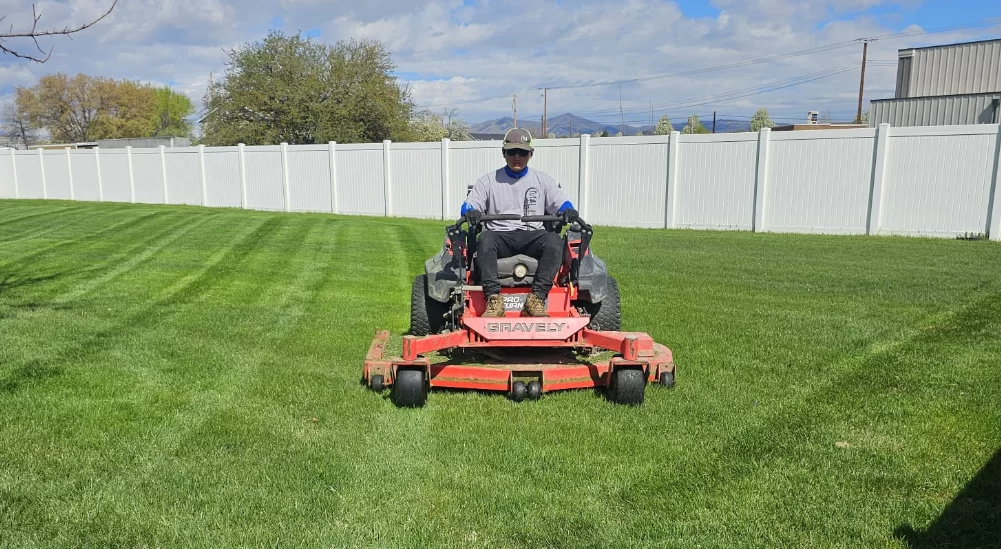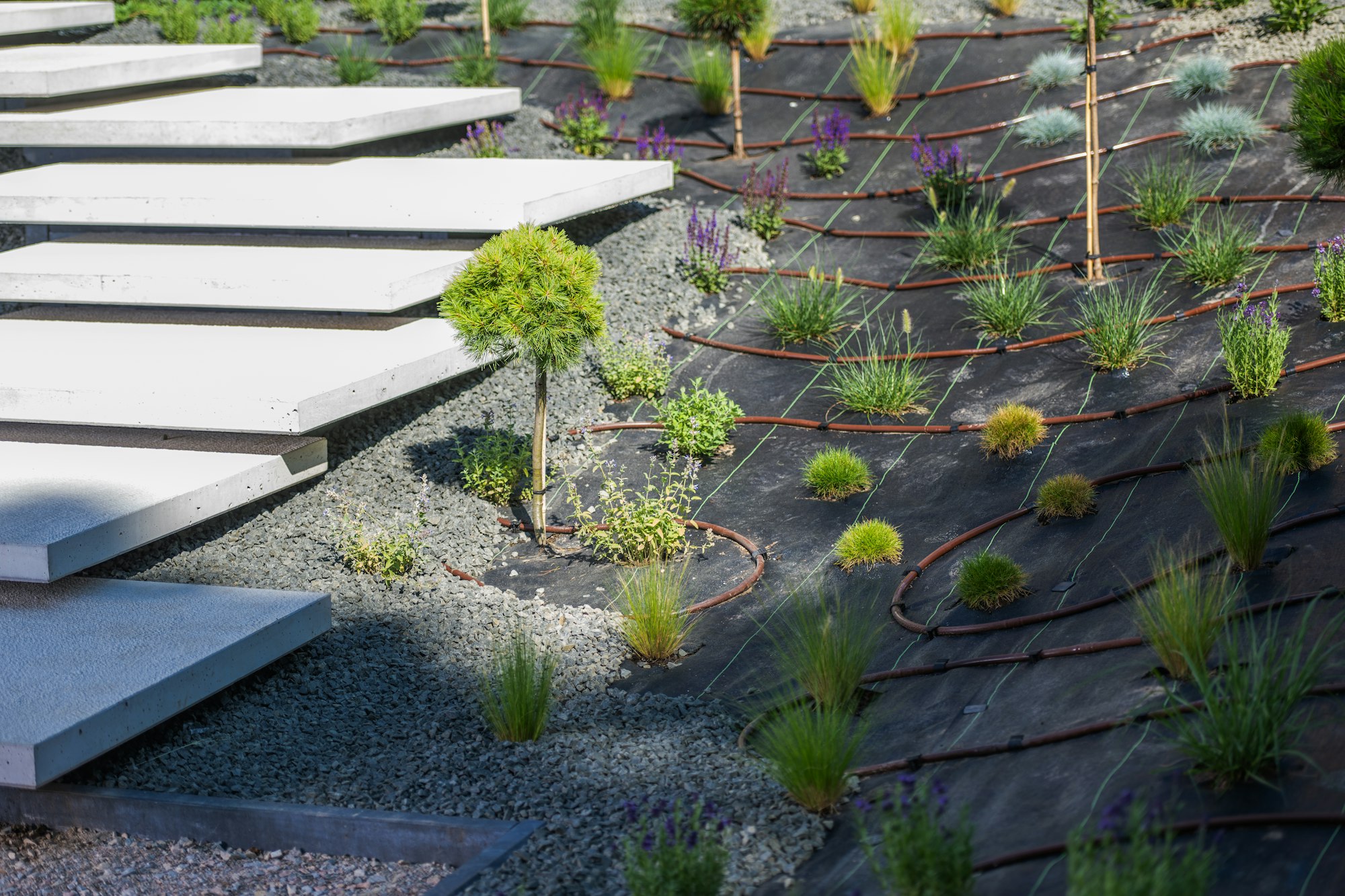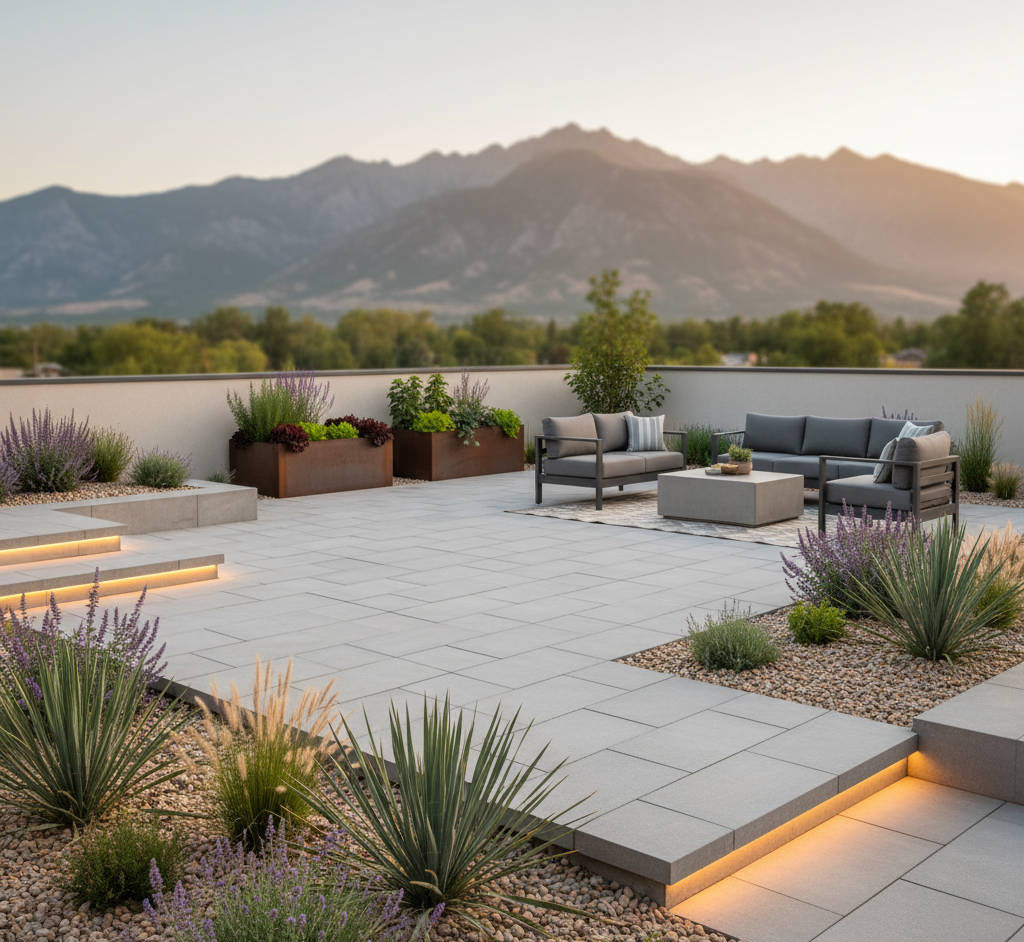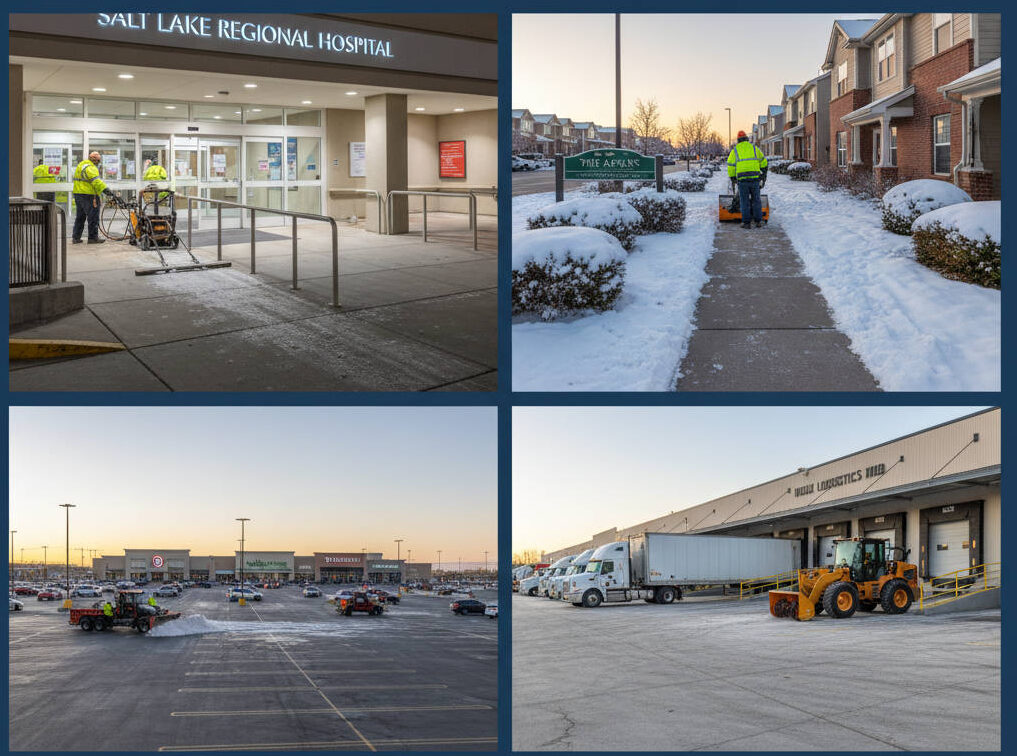Why Sustainable Landscaping is a Game-Changer for Commercial Properties
In today’s environmentally conscious world, sustainability is more than just a buzzword—it’s a necessity. For commercial property owners, incorporating sustainable landscaping solutions is an excellent way to reduce environmental impact while cutting down on long-term maintenance costs. Whether you’re running a large office park or a retail space, adopting eco-friendly practices in your landscaping can significantly benefit your business.

Transform your commercial property with sustainable landscaping solutions that save resources, reduce costs, and create an eco-friendly environment. Contact us today to get started on a greener future for your business.
This blog will dive into the sustainable landscaping solutions that can help you save resources, lower your operational costs, and still create a beautiful, welcoming environment for employees, clients, and visitors.
What is Sustainable Landscaping?
Sustainable landscaping involves designing, installing, and maintaining landscapes in a way that is environmentally friendly and resource-efficient. Unlike traditional methods, sustainable landscaping aims to work with nature, rather than against it, to minimize water use, reduce waste, and preserve natural ecosystems.
Some key elements include:
- Water conservation through smart irrigation systems
- Use of native plants that thrive with minimal water and maintenance
- Implementing permeable paving and rainwater harvesting systems
Benefits of Sustainable Landscaping for Commercial Properties
Sustainable landscaping goes beyond aesthetic appeal and brings tangible benefits for commercial properties, including:
- Cost Reduction
One of the most immediate advantages is cost savings. With water-efficient irrigation systems, native plants, and reduced maintenance requirements, your business can significantly lower its landscaping budget over time. Automated systems like drip irrigation deliver water directly to plants’ roots, minimizing water waste and reducing utility bills. - Energy Efficiency
Thoughtful landscape design can also improve the energy efficiency of your property. Strategically planted trees and shrubs can provide shade during hot summer months, reducing the need for air conditioning, while windbreaks can help to insulate buildings in colder months. - Environmental Impact
By opting for sustainable landscape practices, your business contributes to the conservation of natural resources. Native plants not only reduce the need for excessive watering and chemical fertilizers but also support local ecosystems by attracting pollinators like bees and butterflies. - Brand Image
Customers and clients are increasingly drawn to businesses that demonstrate a commitment to environmental stewardship. Adopting sustainable landscaping practices can enhance your company’s brand image and show that you are proactive in caring for the environment.
Key Sustainable Landscaping Solutions to Implement
To make your commercial landscape more eco-friendly, here are several sustainable landscaping solutions to consider:
- Native Plant Selection
Using native plants is a cornerstone of sustainable landscaping. These plants are adapted to your region’s climate and soil, requiring less water, fertilizer, and maintenance. They also support local wildlife, which is beneficial for the broader ecosystem. - Efficient Irrigation Systems
Smart irrigation systems, such as drip irrigation or weather-based controllers, ensure that your landscape gets the right amount of water at the right time. These systems prevent water waste by adjusting the watering schedule based on weather conditions, soil moisture levels, and the specific needs of each plant. - Rainwater Harvesting
Collecting and storing rainwater to irrigate your landscape is a sustainable way to reduce water consumption. Rain barrels and cisterns can capture runoff from roofs and other surfaces, providing a free source of water for your plants. - Permeable Paving
Permeable paving materials, such as gravel or porous concrete, allow rainwater to seep through, reducing runoff and recharging groundwater supplies. This prevents erosion and water pooling, while also helping to mitigate the urban heat island effect. - Composting and Mulching
Reusing yard waste and organic matter through composting can reduce the need for chemical fertilizers. Mulching not only enriches the soil but also helps retain moisture, reducing the frequency of watering.
How Sustainable Landscaping Can Save Resources and Lower Costs
Sustainable landscaping practices can result in significant resource savings for your commercial property. Here’s how:
- Water Savings
Water is one of the most expensive resources in landscape maintenance. Implementing efficient irrigation systems, using drought-tolerant plants, and incorporating rainwater harvesting can drastically cut down on water usage. In fact, businesses that switch to sustainable landscaping can save between 20-50% on their water bills annually. - Reduced Maintenance Costs
Sustainable landscapes require less mowing, fertilizing, and pruning compared to traditional lawns and landscapes. The use of native plants that thrive in your local environment minimizes the need for regular maintenance, which means fewer labor hours and lower upkeep costs. - Long-Term Investment
Although sustainable landscaping solutions may require a higher initial investment, they provide long-term financial benefits. Over time, the reduction in water use, energy consumption, and maintenance costs leads to a strong return on investment (ROI).
Eco-Friendly Landscaping Practices for Every Season
To maintain a truly sustainable landscape, year-round care is essential. Here’s how to manage your landscape through each season:
- Spring: Focus on planting native species and applying mulch to retain soil moisture as the weather warms up.
- Summer: Water efficiently using smart irrigation systems to prevent overwatering. Regularly check for pests and manage them using organic solutions.
- Fall: Prepare for the colder months by pruning plants, applying compost, and planting trees to offer shade during the following summer.
- Winter: Protect your plants with sustainable mulches and limit the use of salt for ice management to prevent damage to nearby plant life.
By implementing these sustainable landscaping solutions, commercial property owners can achieve a balance between aesthetics, environmental responsibility, and cost savings. Whether through water conservation, energy efficiency, or reduced maintenance costs, sustainable landscaping is an investment that pays off in both financial and ecological terms.



